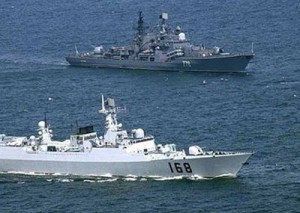Military tensions between China and India are rising, in part due to the border intrusions into Ladakh in the last months, and both countries are now currently on a mission to strengthen existing alliances and secure new ones against a possible standoff.
The contested Line of Actual Control (LAC) – the border between Ladakh in India, and Tibet under Chinese control – has been a key element in the rising tensions between the China and India. However, the two nations are now preparing for a possible standoff on the seas as well. Influence in the Asia-Pacific region is viewed by both countries as vital, and in order to achieve this, allies are needed. In the last couple of months, both countries have intensified their diplomatic relations with the surrounding countries in the region.
India has courted several countries by offering everything from credit, trade agreements, increased arms sales and public support. Indian Foreign Minister Pham Binh Minh visited Vietnam in July and offered the country a US$100 million loan to purchase patrol boats, which according to experts, will be used to resist Chinese incursions in the South China Sea. In a speech in Delhi, the Indian minister outlined Hanoi’s vision for regional security and India’s role within it. Indian Defence Minister AK Antony has recently visited Singapore, Thailand and Australia, offering trade agreements and reaffirming bilateral defence ties.
In Australia, a country with relatively strong ties to China, both the Indian minister and his Australian counterpart pledged to strengthen the existing ties between their respective military forces. India has also seen a diplomatic opportunity in the recent standoff between China and Japan over the disputed Diaoyu/Senkaku Islands. Japanese Prime Minister Shinzo Abe has been searching for allies with naval capabilities in the region, and India been quick to publicly state her support. India has approved Myanmar’s (Burma’s) long-standing request for support in constructing offshore patrol vessels as part of a more extensive agreement to expand Burmese-Indian defence relations.
India’s emphasis on its naval capabilities is evident in the recent launch of the INS Vikrant, India’s first aircraft carrier. In response to the launch of INS Vikrant, Xinhua news agency noted that India, “already a regional heavyweight, has always held the dream of becoming a global power”. However, Xinhua added that India’s overall national strength lags behind that of China and Japan, assuring that “there is no arms race between China and India”.
Chinese presence in the Indian Ocean and elsewhere is growing. In May, Chinese President Xi Jinping hosted the Sri Lankan Head of State in Beijing, where the two leaders agreed to a strategic cooperative partnership which has already greatly benefited the Sri Lankan economy through contracts with Chinese development, construction and oil companies. Bangladesh is being courted through favourable arms deals and there is evidence of a planned Chinese-supported naval base on the Seychelles.
A highly publicised joint naval exercise between China and Russia took place in July and was described by China as “the country’s largest with a foreign partner”. The drill took place in the Sea of Japan, only a couple of hundred kilometres away from a joint US-Japanese air exercise. Although a Chinese official statement said that the drill would contain “no aggressive element” the Chinese fleet comprised four destroyers, two guided missile frigates and a support ship.





 Print
Print Email
Email